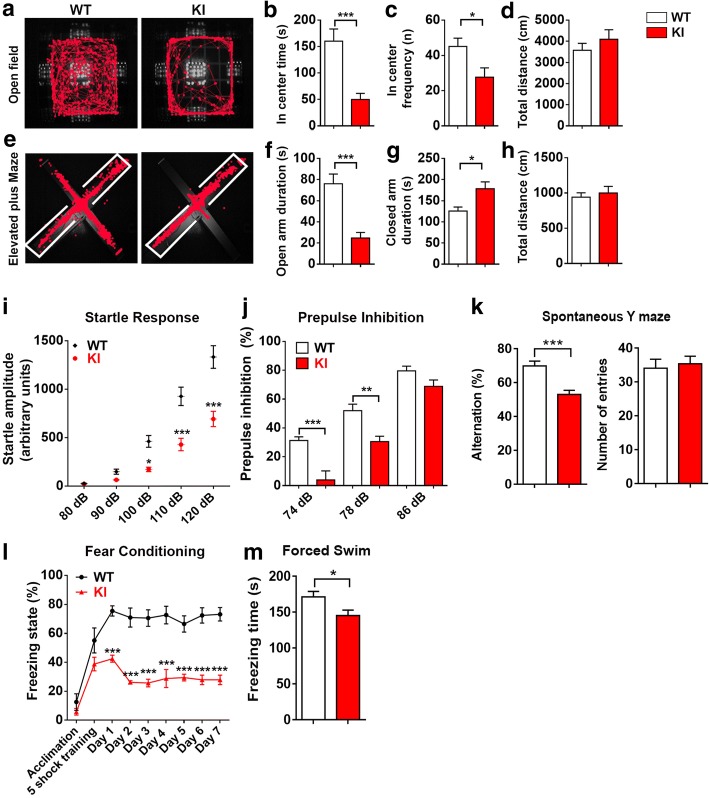Fig. 5.
NL2 R215H KI mice display schizophrenia-like behaviors. a Representative running track of WT and R215H KI mice (male) in an open field within 10 min duration. b The center time of WT and KI mice spent in the open field. c The frequency of WT and KI mice entering the center zone of the open field. d The total distance of WT and KI mice traveled in the open field test. e Representative running track of WT and R215H KI mice (male) in elevated plus maze for 5 min. White line indicates closed-arms. f The quantified time spent in the open-arms of WT and KI mice. g The time spent in the closed-arms of WT and KI mice. (h) The total distance traveled in the elevated plus maze test. a-h WT mice n = 11, KI mice n = 12,; Student’s t-test was used for analysis. i Startle response of WT and R215H KI mice (male) toward 80, 90, 100, 110, and 120 dB sound pulses. j The percentage of pre-pulse inhibition (PPI) to a pre-pulse of 74 dB, 78 dB, and 86 dB. WT mice n = 12, KI mice n = 9. Two-way ANOVA with Sidak’s multiple comparison test was used for analysis. k Spontaneous Y maze test. WT mice n = 10, KI mice n = 12, Student’s t-test. l Contextual fear conditioning test. R215H KI mice exhibit significant reduction of freezing time when placed back in the test chamber after 1–7 days of shock training (Two-way ANOVA with Sidak’s multiple comparison test, genotype F(1, 99) = 172.7, P < 0.0001, WT n = 8, KI n = 5). m Forced swim test. Freezing time were analyzed. WT mice n = 23, KI mice n = 16, Student’s t-test. Data represent mean ± SEM; *P < 0.05, **P < 0.01, ***P < 0.001

